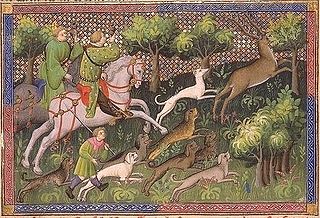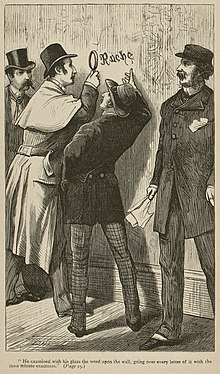
The dachshund, also known as the wiener dog or sausage dog, badger dog and doxie, is a short-legged, long-bodied, hound-type dog breed. The dog may be smooth-haired, wire-haired, or long-haired. Coloration varies.
Fallacies of definition are the various ways in which definitions can fail to explain terms. The phrase is used to suggest an analogy with an informal fallacy. Definitions may fail to have merit, because they: are overly broad, use obscure or ambiguous language, or contain circular reasoning; those are called fallacies of definition. Three major fallacies are: overly broad, overly narrow, and mutually exclusive definitions, a fourth is: incomprehensible definitions, and one of the most common is circular definitions.

A kipper is a whole herring, a small, oily fish, that has been split in a butterfly fashion from tail to head along the dorsal ridge, gutted, salted or pickled, and cold-smoked over smouldering wood chips.
An irrelevant conclusion, also known as ignoratio elenchi or missing the point, is the informal fallacy of presenting an argument whose conclusion fails to address the issue in question. It falls into the broad class of relevance fallacies.

A straw man fallacy is the informal fallacy of refuting an argument different from the one actually under discussion, while not recognizing or acknowledging the distinction. One who engages in this fallacy is said to be "attacking a straw man".

A hound is a type of hunting dog used by hunters to track or chase prey.

Fox hunting is a traditional activity involving the tracking, chase and, if caught, the killing of a fox, normally a red fox, by trained foxhounds or other scent hounds. A group of unarmed followers, led by a "master of foxhounds", follow the hounds on foot or on horseback.

Drag hunting or draghunting is a form of equestrian sport, where mounted riders hunt the trail of an artificially laid scent with hounds.

The Artois Hound or Chien D'Artois is a medium-sized breed of dog. A scent hound, the Artois was breed in northern France as a pack hunter. It is a rare breed today, but was popular in France before the 20th century. The breed was heavily crossbred and had to be reconstructed in the 1970s to more closely resemble the historical breed.

The Bavarian Mountain Hound is a breed of dog from Germany. As a scent hound, it has been used in Germany since the early 20th century to trail wounded game.

The black dog is a supernatural, spectral, or demonic hellhound originating from English folklore that has also been seen throughout Europe and the Americas. It is usually unnaturally large with glowing red or yellow eyes, is often connected with the Devil, and is sometimes an omen of death. It is sometimes associated with electrical storms, and also with crossroads, barrows, places of execution and ancient pathways.
A red herring is a figurative expression referring to a logical fallacy in which a clue or piece of information is or is intended to be misleading, or distracting from the actual question.

The Transylvanian Hound is a dog breed originating from Hungary and Transylvania and was historically primarily used for hunting. It is a strong, medium-sized scent hound, characterized by a black body, with tan and sometimes white markings on the muzzle, chest and extremities, and distinctive tan eyebrow spots. It has a high-pitched bark for a dog of its size. The breed was rescued from extinction by focused breeding efforts in the late 20th century. There were formerly two varieties, the tall and the short, developed for different kinds of hunting in the Middle Ages. Only the tall variety survives today.

The bloodhound is a large scent hound, originally bred for hunting deer, wild boar, rabbits, and since the Middle Ages, for tracking people. Believed to be descended from hounds once kept at the Abbey of Saint-Hubert, Belgium, in French it is called, le chien de Saint-Hubert.
A false scent or false trail is an incorrect scent which may mislead an animal which hunts by smell, especially a hound. This may be the result of deliberate interference by a hunt saboteur or it may be a form of control by the master. Aniseed, a red herring or the entrails of a rabbit are commonly used for this purpose. The term "red herring" comes from this practice.

The sleuth hound was a breed of dog. Broadly, it was a Scottish term for what in England was called the Bloodhound, although it seems that there were slight differences between them. It was also referred to as a 'slough dog',, and a 'slow hound', the first word probably representing a mispronunciation of 'slough' rather than a reference to the speed of the hound.

Rache, also spelled racch, rach, and ratch, from Old English ræcc, linked to Old Norse rakkí, is an obsolete name for a type of hunting dog used in Great Britain in the Middle Ages. It was a scenthound used in a pack to run down and kill game, or bring it to bay. The word appears before the Norman Conquest. It was sometimes confused with 'brache', which is a French derived word for a female scenthound.
In rhetoric and ethics, "two wrongs don't make a right" and "two wrongs make a right" are phrases that denote philosophical norms. "Two wrongs make a right" has been considered as a fallacy of relevance, in which an allegation of wrongdoing is countered with a similar allegation. Its antithesis, "two wrongs don't make a right", is a proverb used to rebuke or renounce wrongful conduct as a response to another's transgression. "Two wrongs make a right" is considered "one of the most common fallacies in Western philosophy".

Coon hunting is the practice of hunting raccoons, most often for their meat and fur. It is almost always done with specially bred dogs called coonhounds, of which there are six breeds, and is most commonly associated with rural life in the Southern United States. Coon hunting is also popular in the rural Midwest. Most coon hunts take place at night, with the dogs being turned loose, trailing and putting the raccoon up a tree without human assistance. Once the raccoon is in the tree, with the dog at the base, it is referred to as "treed", with "treeing" being the active verb form.

The Staghound, sometimes referred to as the English Staghound, is an extinct breed of scent hound from England. A pack hound, the breed was used to hunt red deer and became extinct in the 19th century when the last pack was sold.
















